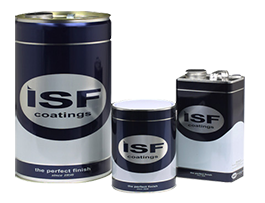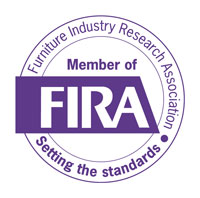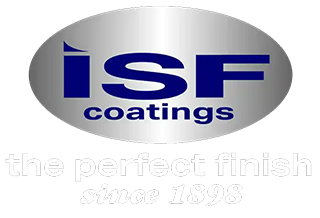Acid Catalysed Lacquer
A two component (2K) lacquer system that is cured by the addition of a catalyst based on a weak acid solution prior to application. Also known as an AC.
Acid Catalyst
The weak acid catalyst component used to cure an AC lacquer.
Air Displacement
The volume of air (measured in cubic feet per minute or CFM) which is pushed through a pump by the piston.
Bar
The measuring unit of air pressure. 1 bar = 14.7psi.
Blooming
Term used to describe the hazy film or whitening produced when the weak acid in either an AC or PC reacts with the Stearate used as a sanding aid in certain sanding sealers.
Bodying Up
Filling up of the grain in French Polishing or building up the coating with polish in a multi-coat cycle.
BS 476: Part 6 (1989)
The British Standards reference associated with tests which determine a product's ability to resist contributing to fire propagation and also to limit the level of heat generated when subject to a specific heat source. Expressed as a rating between Class O and Class 4, Class O being the highest rating.
BS 476: Part 7 (1997)
The British Standard reference associated with tests which determine a product's ability to resist the spread of flames over its surface when subject to a specific heat source. Expressed as a rating between Class 1 and Class 4, Class 1 being the highest rating.
BSi
The British Standards Institute – the external verifying body who audit Companies performance against the British Standards they are accredited to.
Burnished
A polishing technique used to increase the gloss level on 2 pack lacquers.
CFM
Measurement unit of air output from a compressor – Cubic Feet per Minute.
Clean and Touch-up
Revival of the lacquered surface without re-polishing.
Cold-spray
A term used to describe a method of applying wax by spray application without having to heat or melt the wax.
Compressor
Machine designed to compress air.
Constant Bleed
A spray system that supplies air to the gun constantly. Typically used with turbine spray units.
Cracking
Fracturing of the coating, primarily as a result of excessive veneer or substrate movement.
Crazing
A network of fine cracks as opposed to lateral fractures with or against the grain, typically caused by poor application practices such as application of hard lacquers over soft lacquers, the use of the wrong thinner or too much thinner and too short drying times prior to re-application.
Denib
The action of slightly 'flatting' or sanding between coats of lacquer to aid inter-coat adhesion and to remove any slight imperfections in the film.
Dulling Down
Term used to describe the action of reducing the sheen or gloss of a lacquered finish.
EPA
The Environmental Protection Act.
Fad
A 'wadding pad' used inside a French Polishers 'rubber'. Often taken out of the rubber and used to apply a thin coat of polish prior to colouring.
Figure
Naturally occurring coloured markings in timber which are enhanced when a good quality coating is applied.
Filler
Wood filler or grain filler, usually supplied as a paste, which is used to 'choke up' of fill minor holes in the timber or the grain. Available in 1 and 2 pack systems, both solvent and waterborne.
FIRA
The Furniture Industry Research Association, which provides information, advice and independent testing on all activities associated with furniture.
FIRA (BS) 6250
A performance testing procedure for coatings to determine resistance to physical damage and chemical attack.
FIRA 5000
A specific 'standard' accredited by FIRA to finishes or systems that meet certain performance criteria which replicate the conditions found in bathrooms and rooms where high water/moisture content prevail.
Fish Eyes
A crater-shaped defect found in the finished film caused by external contamination. Typical sources of the contamination include silicone or wax from other stripping or finishing processes, silicone from aerosol sprays, grease, oil or dirt, and moisture contamination from air lines.
Flash Point
The lowest temperature at which a mixture of vapour in air can be ignited by a naked flame.
French Polish
A traditional finish, based on shellac or varnish, used mainly in the reproduction or restoration of antique furniture. High skill levels are required to use this type of finish.
Gloss
Term used to describe the visual or measured 'sheen' of a lacquer or finish. Typically rated as gloss (90%+), Satin (45-55%), Semi-Matt (20-30%), Matt (10%) and Dead Matt (0-5%). The level of sheen is measured by a gloss meter which calculates the amount of light reflected from the film surface at 60°.
Grain
Natural indentations found in the surface of the timber. Timbers can be 'tight' or 'close' grained such as Cherry, or 'open' grained such as Oak.
Gravity-Feed Cup Gun
A spray gun where the cup holding the lacquer is sat on top of the gun and the lacquer is fed to the tip by gravity i.e. it flows from the cup down through the gun.
HVLP
High Volume Low Pressure – a term used to describe a spray system where large amounts of lacquer are transferred under low air pressures thus providing good transfer efficiencies.
IR
Infrared – a source of heat or radiation which is invisible to the eye and is found between the visible and microwave regions of the electro-magnetic spectrum. Drying systems for coatings often use IR as the heat source.
ISO9001
A Quality Management System in accordance with ISO 9001:2000 to provide a set of processes that ensure consistency and improvement of working practices. Which in turn provide products and services that meet customer's requirements.
ITW
‘In the White’, meaning substrate in its pre-finished form.
Mass Balance
A method of calculating the relationship between the amount of solvent and solids in a solvent borne finishing system.
MDF
Medium Density Fibreboard.
NC
Abbreviation for Nitrocellulose – a low performance, quick drying lacquer used mainly on occasional furniture, fittings, pencils and coffins.
NGR
Abbreviation for Non Grain Raising – a term usually associated with stains that do not swell and raise the fibres of the grain when applied to timber.
Non-Convertible Coatings
Term used to describe a coating that undergoes a chemical or physical change during drying and curing that cannot be reversed after it has occurred i.e. the coating cannot be returned to its liquid state. Typical examples are AC and UV lacquers. Also known as Non-Reversible coatings.
Orange Peel
A film defect which resembles the ‘speckled’ or ‘mottled’ surface of an orange, typically caused by uneven drying, incorrect coating weights or wrong spray application pressures.
Pantone
A colour reference library containing many hundreds of colours typically used for matching or specifying printing inks.
Papering-Up
The action of sanding a timber substrate after the stripping process to ensure that all remnants of stripper or other contaminants or surface blemishes are fully removed prior to re-coating.
Patina
Name given to a stain or ‘stipple’ used to give an antique or aged effect on furniture or coated panels, especially picture frames.
PDS
Abbreviation for Product Data Sheet.
Pot life
Associated with two-pack lacquers such as AC or PU, and is a measure of how long after mixing the two components i.e. lacquer and catalyst/hardener, the coating will remain fluid enough to be used. Typically, this is 36 hours for AC and 2-4hours for PU.
Pre-catalyst Lacquer
Also known as PC, Pre-cat and Pre-catalysed lacquer. A type of single component (1K) lacquer where a weak acid is already incorporated into the formulation with no need for further mixing prior to application.
Pressure Feed
Term used to describe the use of a pressure pot to feed lacquer to a spray gun under air pressure.
PSI
Abbreviation for Pounds per Square Inch. The measurement unit for air pressure from a compressor.
PU
Abbreviation for Polyurethane lacquers, typically supplied as a two-component system comprising lacquer and isocyanate hardener.
Pulling Over
A method of levelling the final film of a shellac or nitrocellulose finish by means of a solvent-damped rubber. The solvents are special blends prepared to soften the film just enough to allow it to be manipulated.
RAL
A colour reference library, originated in Germany, and comprising of several hundred colours often specified by designers and architects. Widely used across the E.U.
Reversible Coatings
The term used to describe finishes or coatings which always remain re-soluble in their own solvents i.e. coatings which do not undergo a chemical or physical reaction during drying or curing that cannot be reversed. Also known as Convertible Coatings. Typical examples are nitrocellulose and French Polish.
RFU
Abbreviation for Ready for Use, meaning the lacquer or paint is supplied in a form that can be used without the need for any additional thinners or catalyst.
SDS
Shortened abbreviation for Material Safety Data Sheet.
Shelf-life
A reference to the length of time after manufacture that a product can still be used without any problems assuming it has been stored in its original unopened container in good conditions.
Shelling
De-lamination of the coating due to tangentially-cut veneers moving, or the inconsistent lifting of ‘annual rings’ in timber.
Specific Gravity
Also known as SG or Density – measures the weight per litre of a liquid compared to the same volume of water. Used in the testing of lacquers and when calculating the application coverage of a paint or lacquer.
Spiriting out/off
French polishing term used to describe the final removal of oil or surface contaminant to give a superior gloss finish.
Stopping Up
The application of wood filler to fill cracks and holes in the timber. The filler is normally applied and sanded smooth prior to any staining or finishing process.
Stripping
The term used to describe the chemical removal of dried paint or lacquer films prior to refinishing or restoring.
Substrate
Another term for the timber or material surface that will be worked on or coated.
Suction Feed Cup Gun
A spray system where the cup sits under the gun and ‘sucks’ up lacquer by suction to the nozzle/tip.
Thermoplastic Film
Term used for coatings that soften or become ‘plastic’ or malleable under heat.
Thermosetting Film
Term used for coatings which are cured or set hard when heat is applied.
Toy Test Certificate (BS EN71)
A certificate of product conformity issued to surface coatings which meet the stringent requirements of BS (EN) 71 rendering them suitable for use on children’s toys and furniture. The test determines the levels of potentially dangerous metals and substances in the coating film.
UV Coatings
An abbreviation for Ultra Violet cured films. These are coatings which typically contain no solvents, are 100% solids, and which cure instantly when exposed to UV light.
Viscosity
The measure of a liquid's resistance to flow. In lay mans terms this means the ‘thickness’ of the lacquer or paint – for example grease is viscous or ‘thick’ whilst water is non-viscous or ‘thin’.
VOC
Volatile Organic Compound.
Volume
A measurement.
Warm
Refers to a colour towards the red or ‘warm’ end of the colour spectrum as opposed to green or ‘cold’.
Wax Finish
A finish generated by the application of a specific wax by the use of fine wire wool onto a finished surface to give either a ‘dulled’ effect or to improve the feel of the surface.
Waxing In
The process of filling dents or bruises in finished furniture with a hard wax stick usually the same colour as the furniture.
Wet and Dry
Associated with the use of a lubricant such as white spirit, Turps or water when sanding or de-nibbing.
Sales Hotline: 0116 274 2222 - Please be aware: Calls may be recorded for training and security purposes.





Copyright © 2026. All Rights Reserved.
ISF Group Limited
Thurmaston Boulevard
Leicester LE4 9HS
Email: info@isf.co.uk
Tel: +44 (0)116 274 2222 | Fax: +44 (0)116 274 3333
Your Privacy Matters
Our website uses cookies to improve your experience on our website.
Click here to read our privacy & cookie policy.
